A Look Back at America’s Most Influential Hunters and the Books That Tell Their Stories
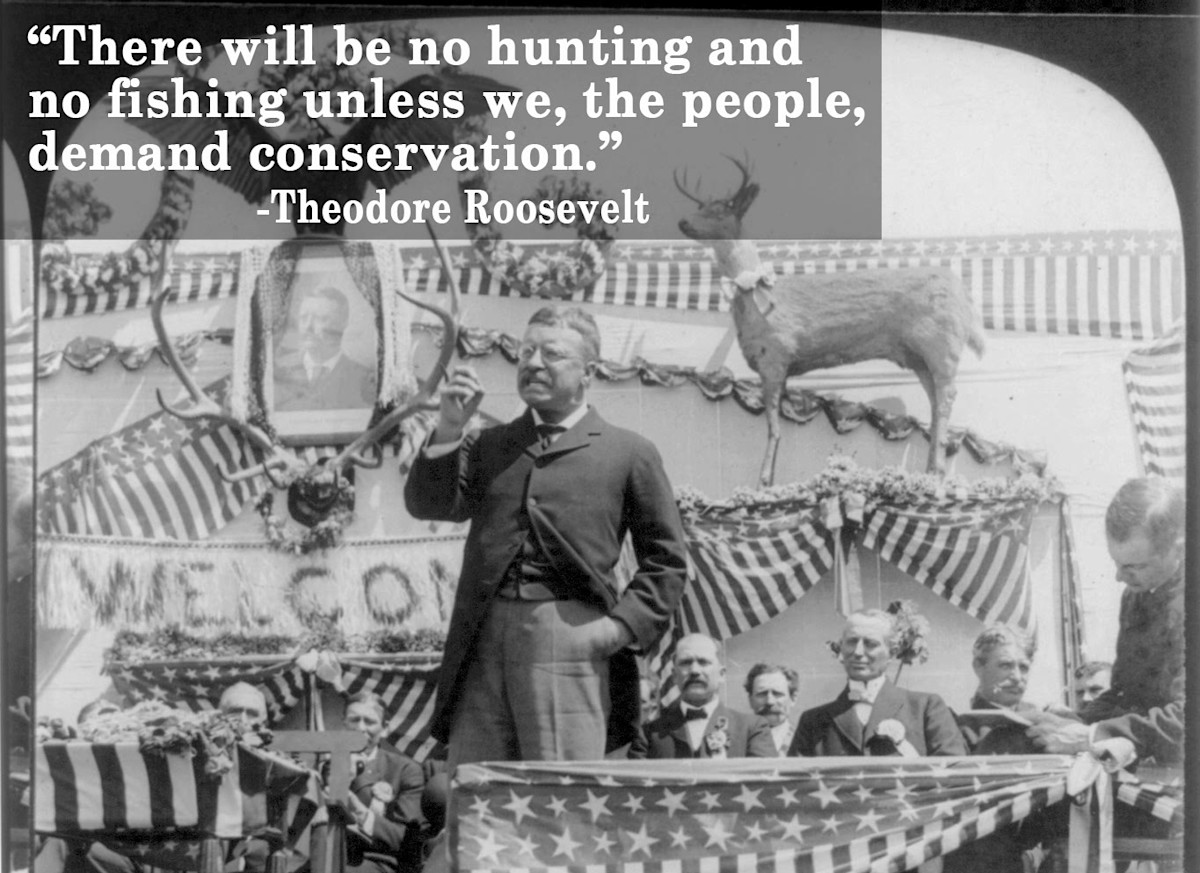
Hunting has a rich history in the United States. Long before our country settled the West, hunters and trappers did the bulk of the heavy lifting which made Manifest Destiny a possibility. Mountain men like Jedediah Smith, John Colter, and many more would later become legendary historical figures. Decades after the mountain man era passed, most of the continental United States had been settled and mostly tamed. As the territories became states, the country’s population grew, and industrialization ramped up, wildlife numbers dwindled; game animals, in particular, suffered at the hands of market hunting. A new type of hunter, one who saw a need to protect game animals and the places they lived, would become the driving force in conservation, wildlife management, and the birth of recreational hunting as we know it today.
There’s a lot of modern day hunters doing great work for the sport by advocating for wild food, public lands, and conservation but the foundation for that work was laid long ago. This is by no means a complete list, but these hunters are a good place to start.
Daniel Boone 1734-1820
“I can’t say as ever I was lost, but I was bewildered once for three days.”
America’s most famous frontiersman, Daniel Boone, became a celebrity in his own lifetime. He is best known for exploring and mapping the area of modern-day Kentucky. While conservation wasn’t a concept Boone was familiar with, he was arguably our new country’s most influential hunter and remains an important hunting figure to this day. Boone was a skilled “Long Hunter” who would set out on extended and dangerous trips, constantly searching for new hunting grounds. Boone’s long hunting adventures would eventually lead him through the Cumberland Gap and into unexplored territory in 1775. He found both conflict and cooperation with Native Americans and opened up new lands for future pioneers. For the next several decades, American hunters and trappers inspired by Daniel Boone would pave the path further westward. There’s a slew of books about him. Boone: A Biography is an in-depth look at his life and My Father, Daniel Boone details his hunting practices.
Teddy Roosevelt 1858-1919
“In a civilized and cultivated country, wild animals only continue to exist at all when preserved by sportsmen. The excellent people who protest against all hunting, and consider sportsmen as enemies of wildlife, are ignorant of the fact that in reality the genuine sportsman is by all odds the most important factor in keeping the larger and more valuable wild creatures from total extermination.”
One hundred years after Daniel Boone’s adventures, Roosevelt became a prominent player in American politics and conservation. With industrialization and urban growth, the country’s population had ballooned but its wilderness and wildlife were disappearing. Roosevelt was a man obsessed with nature, wildlife, and hunting. Buoyed by his passion for the outdoors, he recognized the need to preserve wild places and the animals they harbored. He forced his agenda until a new conservation ideal took hold in America. You’ll find plenty of reading material about and by T.R. Good Hunting: In Pursuit of Big Game in the West… is a personal account of some of his hunting adventures and Wilderness Warrior explores his many conservation crusades.
William Hornaday 1854-1937
“The wild things of this earth are not ours to do with as we please. They have been given to us in trust, and we must account for them to the generation which will come after us and audit our accounts.”
William Hornaday was a contemporary of Theodore Roosevelt. A zoologist and taxidermist, Hornaday was also one of America’s foremost conservationists in the early twentieth century. Hornaday was widely traveled and collected wildlife specimens in Asia and India in the 1870’s. Later, he would become concerned with the plight of American wildlife and was an instrumental figure in preventing the extinction of bison. Hornaday is a controversial subject when it comes to hunting. He spoke out against the dangers that over-hunting posed for wildlife, as more people had easy access to modern firearms and automobiles. But he also hunted to collect specimens and was a founding member of the Boone and Crockett Club. While some modern hunters know it only as a qualitative system for judging “trophies”, the Boone and Crockett organization’s mission is to promote fair chase hunting and the collection of scientific data pertaining to big game animals. Campfires in the Canadian Rockies is Hornaday’s account of an extended wilderness trip augmented with excellent photography. The Most Defiant Devil explores Hornaday’s conservation legacy without glossing over his shortcomings.
Saxton Pope and Arthur Young 1875-1926, 1883-1935
“In the joy of hunting is intimately woven the love of the great outdoors. The beauty of woods, valleys, mountains, and skies feeds the soul of the sportsman where the quest of game only whets his appetite.”
Not long after Roosevelt and Hornaday changed how we manage wildlife and wild places, Saxton Pope and Arthur Young introduced archery hunting to a new but growing number of recreational hunters in America. The pair learned a great deal from Ishi, a Native American and last of the Yahi tribe, who were raised apart from the influences of modern society. That is a fascinating story in and of itself, but Pope and Young went on to have many adventures, including safaris in Africa, and hunts in Alaska. Pope and Young were tough too, having killed grizzly bears with handmade bows and arrows. Their hunts were often documented in Field and Stream magazine and Pope wrote Hunting with the Bow and Arrow, which is still available nearly a century later. The Pope and Young Club is the leading archery hunting advocacy group in America.
Aldo Leopold 1887-1949
“To those devoid of imagination a blank place on the map is a useless waste; to others, the most valuable part.”
Aldo Leopold is best known for his concept of the “land ethic” which basically means we have a responsibility to treat the land and wildlife well and if we do, both nature and humans will be better off. The land ethic sometimes requires active preservation and improvement and Leopold wasn’t afraid to work for what he wanted. Being a hunter and conservationist, he had an early understanding of the value of true wilderness and the interconnectedness of ecosystems. Leopold worked for the U.S. Forest Service for many years, promoting the framework for our current Wilderness Areas and further developing a formula for conservation on an ecological level. He even wrote the first textbook on wildlife management. After spending time in what would become New Mexico’s Gila Wilderness, Leopold was transferred to Wisconsin where he held a chair position in game management at the University of Wisconsin. Throughout it all, he was an observer of nature that took in every detail. Eventually, he was able to put his knowledge into direct practice on a small, dilapidated farm. Over the years, Leopold’s land ethic transformed the neglected piece of land into a healthy landscape and a haven for wildlife. He was a prolific writer and documented the process of renewal on his Wisconsin farm in A Sand County Almanac, a book every hunter should be required to read.
Ernest Hemingway 1899-1961
“I did not mind killing anything, any animal, if I killed it cleanly, they all had to die and my interference with the nightly and the seasonal killing that went on all the time was very minute and I had no guilty feeling at all. We ate the meat and kept the hides and horns.”
Ernest Hemingway was, and still is, one of America’s most influential writers. His work often reflected his trouble with drink, women, war, rivals, and his own personal demons, but much of his writing, such as The Big Two-Hearted River, included beautiful passages about hunting and fishing. And Hemingway himself was an ardent angler, wingshooter, and big game hunter. As a hugely popular American novelist who was also an outdoorsman, Hemingway was an important advocate for hunting and fishing. Both Hemingway on Hunting and The Green Hills of Africa are fascinating non-fiction works about the writer’s passion for hunting.
Colonel Townsend Whelen 1877-1961
“The .30-06 is never a mistake.”
Townsend Whelen was an accomplished marksman, a die-hard hunter, and developed a need to explore wild places at a young age. A career military man until 1936, Whelen, was known as “Townie” to his friends. He spent time camping solo in the jungles of Panama and hunting the wilderness of the Rockies, the Adirondacks, and the mountains of British Columbia. He wrote prolifically and his work appeared in Field and Stream, Outdoor Life, and Sports Afield. He also wrote and edited several books on big game hunting and guns. He was an early proponent of the .30-06 and meticulously studied rifles, bullets and ballistics. He even helped create new “wildcat” calibers. His books Wilderness Hunting and Wildcraft and On Your Own in the Wilderness are still relevant in a time when even the best technology and gear can’t replace know-how and woodsmanship skills.
Jack O’Connor 1902-1978
“We had worked much harder getting that ram and packing him off the mountain than at any time we were prospecting, but we enjoyed every minute of it. Fellows who like to hunt are that way.”
Jack O’Connor is one of hunting’s most respected writers. He’s best known for his devotion to the .270 Winchester and his love for sheep hunting. But there was a lot more to O’Connor, who grew up in Arizona just as the frontier life was disappearing. He was a college journalism professor who wrote romance articles for women’s magazines. He was the shooting editor of Outdoor Life for 31 years. He also wrote many books on hunting and guns, as well as a couple of western novels. And what really made Jack special was his ability to tell a good story, even if he missed or wounded an animal. He brought real hunting adventures into the homes of hunters who had never been to Alaska, Baja, or British Columbia. And he wasn’t afraid to work hard, often spending weeks at a time in remote camps in search of an animal. While he sometimes hunted with guides and friends, he also took his family on do-it-yourself hunting trips in the wild deserts of Arizona and Mexico. His wife, Eleanor, was his favorite hunting companion. He used his position as a popular writer to promote seasonal protection and management of antelope and sheep and worked to prevent the building of dams which would inundate deer and elk winter range. It’s hard to go wrong with anything O’Connor wrote but The Big Game Animals of North America is a good place to start.
Fred Bear 1902-1988
“A hunt based only on the trophies taken falls short of the what the ultimate goal should be. Go afield with a good attitude, with respect for the forest and fields in which you walk. Immerse yourself in the outdoor experience. It will cleanse your soul and make you a better person.”
Fred Bear was the only hunter on this list that was still alive when I started hunting and I remember reading his articles in magazines. He didn’t even pick up a bow until he was 29 but he managed to travel and hunt a wide range of North American big game animals with archery equipment. He became our most recognized archery hunting figure and Bear was an accomplished writer, filmmaker, and the owner of an archery hunting company that still thrives today. But more importantly, Bear remained humble and grounded despite his success. He placed more value on the experience of the hunt than killing a “trophy” animal. Read the Archer’s Bible for tips on becoming a better bowhunter and Fred Bear’s Field Notes: The Adventures of Fred Bear, a journal of his hunting adventures.
A brief message from Steven Rinella: Hey everyone, lots of you reached out after seeing my interviews about Daniel Boone on HISTORY Channel’s The Men Who Built America: Frontiersmen. Afterward, I did an interview with one of their writers about survival strategies that pertain to both modern hunters and the hunters of Boone’s time. Check out the article here.

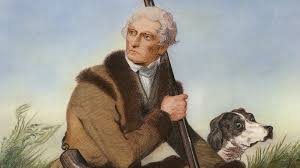
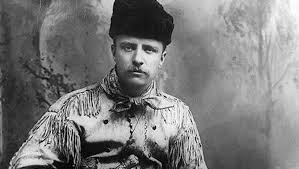

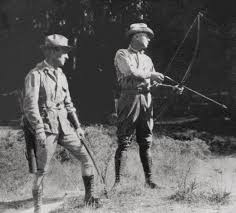
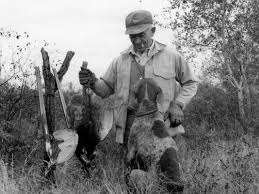
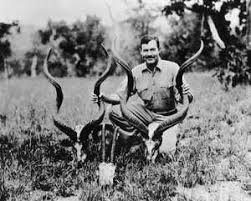

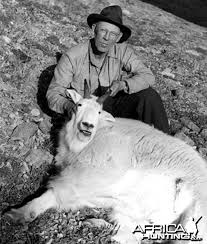
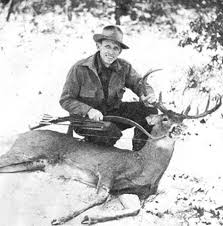




Conversation